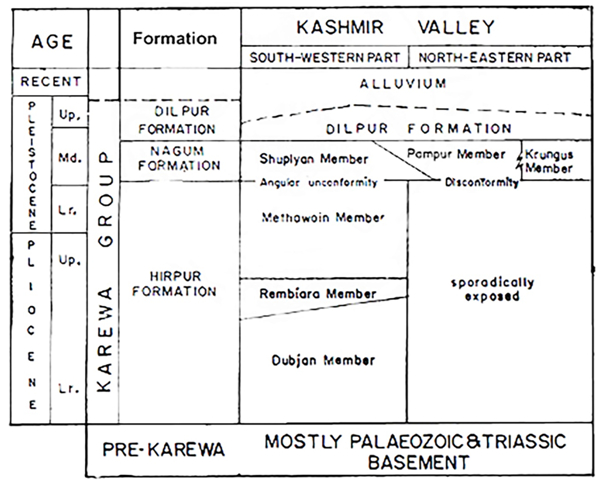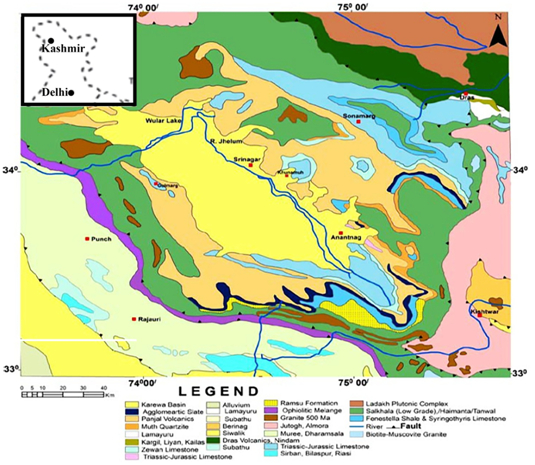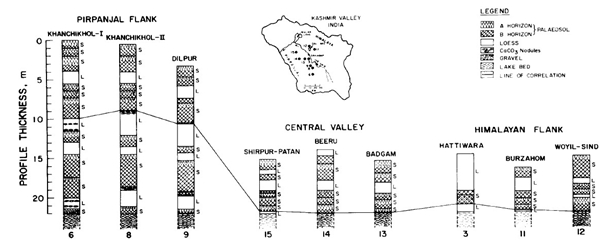Dilpur Fm
Type Locality and Naming
It is named after Dilpur village located on Oasba Nagum-Buzgu road. Type section is in Dilpur section in small ravine opposite Dilpur village (Bhatt, 1989). [Original Publications: Bhatt, D.K. 1989. The lithostratigraphy of Karewa Group, Kashmir Valley, India and a critical review of its fossil record. Memoirs Geological Survey of India, 122: 85p; Wadia, D.N. 1941. Pleistocene Ice Age deposits of Kashmir. Proceedings National Institute of Science, India, 7(1): 49-59]
Synonyms: Formed part of Upper Karewa Stage (of Wadia, 1941), Loam Member (Bhatt, 1976), Loess Member (Bhatt, 1982), post-Karewa deposit (Pant et al., 1978).
Lithology and Thickness
Siltstone. In general it is constituted of dark brown to golden brown loamy silt, locally calcareous and intercalated with thin sandy beds and paleosol horizons. Lithology varies from mud to silt to sand, and has carbonate concretions and organic-matter-enriched palaeosol layers (Singh, 1982; Bhatt, 1989). Its thickness is about ~ 50 m; and in type section is 22 m. Composition varies from highly muddy, silty to sandy.
Relationships and Distribution
Lower contact
Upper contact
Upper contact with Karewa terraces and plateaux.
GeoJSON
Fossils
No fossil is known from the Dilpur Formation so far.
Age
Depositional setting
Pant et al., (1978) regarded the Dilpur Formation as loess deposits. Singh (1982) suggested that it was likely that after the lake was drained, the sediments were deposited by sluggish streams, mostly in the form of fine-grained flood-plain deposits. And might include some aeolian input.
Basavaiah et al. (2010) recorded 8 normal and 8 reversed polarities ranging between 4.40 and 0.77 Ma, Their anisotropy of magnetic susceptibility data point to a NE-SW flowing river system prior to 4.18 Ma with the Pir Panjal being the provenance. The fluviolacustrine phase according to Basavaiah et al. (2010) prevailed between 4.18 and 0.77 Ma. Relatively strong flow velocities existed towards the NE between 4.18 and 1.07 Ma (upper Gilbert, Gauss and lower and middle Matuyama chron). In upper Matuyama chron (<1.07 Ma) the paleodirection changed to NW, possibly related to emergence of the ancestral Jhelum. The variable temporal sedimentation rates recorded are related to interplay between the climate and pulsating tectonic uplift of the Pir Panjal Range (Basavaiah et al., 2010).
Additional Information


